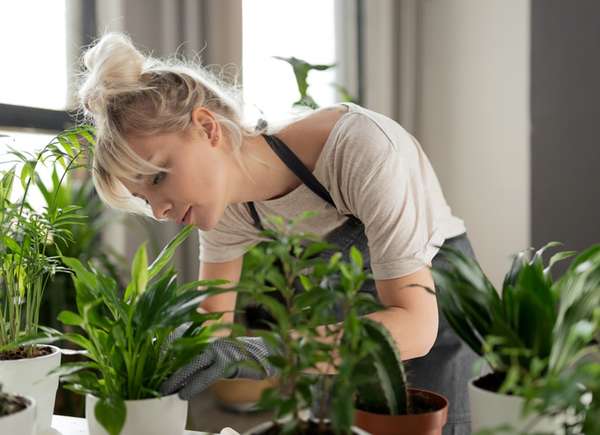If you’re a plant enthusiast living in a small apartment, cramped office, or any limited space, you don’t have to give up on your green dreams. Indoor gardening is possible even in the coziest of spaces. Whether a beginner or an experienced plant parent, these tips will help you create a thriving indoor garden in your compact living quarters.
Plants for interiors are specifically chosen and cultivated to thrive in indoor environments. They bring nature’s beauty and numerous benefits to the inside of homes, offices, and other indoor spaces. Here are helpful tips and creative ideas to help you make the most of your small space for indoor gardening:
Choose Compact Plants
When working with limited space, opt for plants that naturally stay small or have a compact growth habit. This includes miniature succulents, dwarf herbs, and tiny flowering plants. Compact plants are easier to accommodate and maintain in small indoor areas.
Vertical Gardening
Vertical gardening is a space-saving technique that involves growing plants upward, utilizing walls or vertical structures. You can use wall-mounted shelves, hanging planters, or trellises to create a vertical garden. Vining plants like pothos, philodendrons, or ivy thrive in this setup, adding greenery without taking up valuable floor space.
Use Tiered Plant Stands
Tiered plant stands or shelving units allow you to display multiple plants at different heights. This arrangement maximizes your space by making efficient use of the vertical room. Position these stands near a window to provide your plants with natural light.
Windowsill Gardens
Windowsills are often an underutilized space for indoor gardening. Choose plants that thrive in bright, indirect light and place them on your windowsills. Herbs, succulents, and small flowering plants can flourish in this environment, making it an excellent use of available space.
Narrow Containers
Select containers that are tall and narrow rather than wide. These containers can hold several plants while occupying less horizontal space. They’re beneficial for tabletop or floor arrangements.
Consider Hanging Gardens
Hanging plants from the ceiling or wall is a fantastic way to add greenery without taking up any floor space. You can use macramé hangers, wall-mounted plant pockets, or hooks to create stunning hanging gardens. This technique also adds a unique visual element to your small space.
Optimize Light
Proper lighting is crucial for indoor plants. Place your plants in the brightest spots available, typically near windows. If natural light is limited, consider using full-spectrum LED grow lights to supplement the light your plants receive.
Plant Stacking
To maximize your space, consider stacking plants at varying heights. Use plant stands, shelves, or vertically aligned containers to create an interesting layered effect. This conserves space and adds depth and visual appeal to your indoor garden.
Choose Self-Watering Planters
Self-watering planters feature a reservoir that stores water and provides it to the plant’s roots as needed. These planters maintain consistent moisture levels, reducing the frequency of watering. For small spaces, self-watering planters can be particularly convenient, as they help ensure your plants receive adequate hydration without requiring additional watering equipment.
Following these detailed indoor gardening tips for small spaces, you can cultivate a thriving and aesthetically pleasing indoor garden, even in the coziest living quarters. These strategies empower you to make the most of your available space and bring the beauty and benefits of plants into your home.







